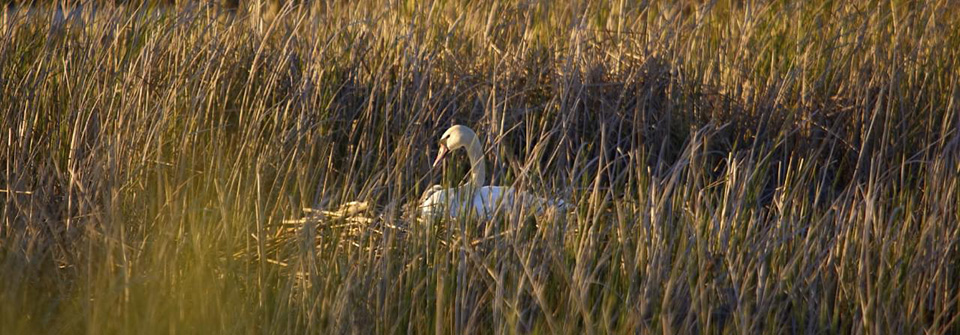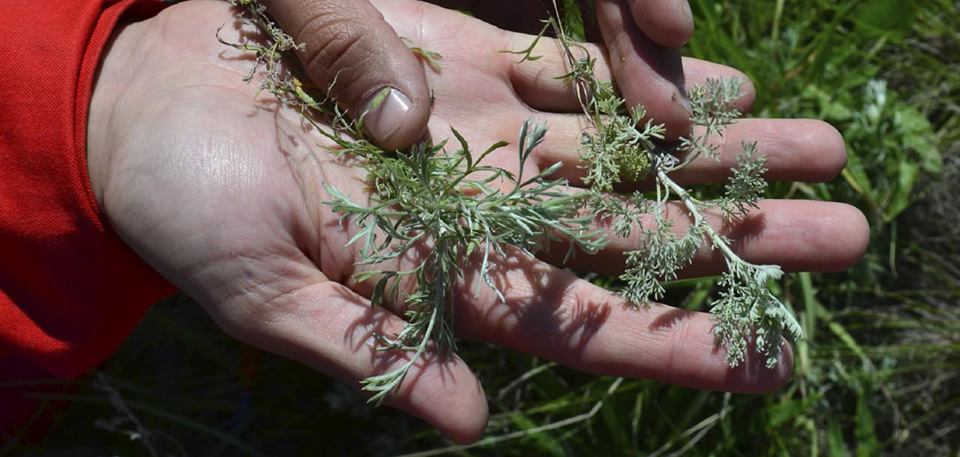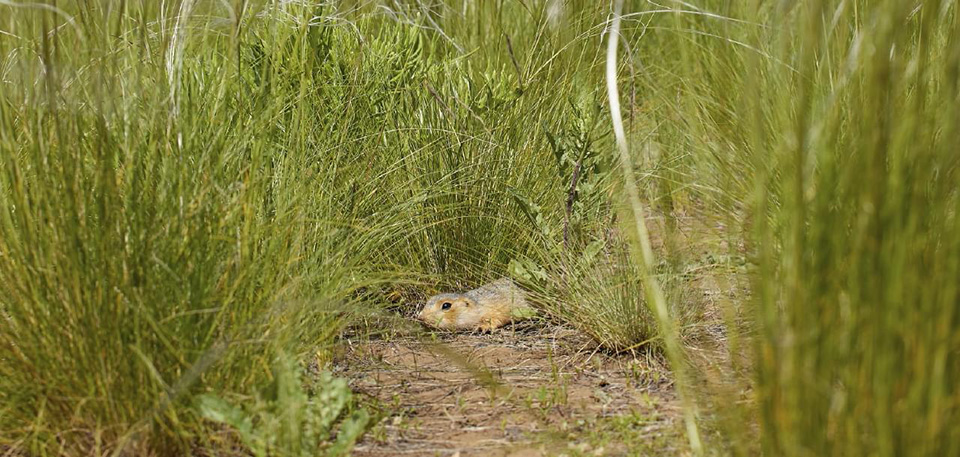As an international oil and gas company, KPO makes great efforts to perform operations with minimal impact on biodiversity.
Since 2012, KPO has been monitoring the biodiversity to define the level of potential risks from its operational activities. In case of evidence of significant negative impact of Company activities on the state of the environment in the West Qazaqstan region, monitoring is required to perform timely planning of activities required to preserve the ecosystems.
As part of Biodiversity Action Plan (BAP) KPO performs the assessment of the four main factors impacting the KOGCF biodiversity:
- Pollutant emissions;
- Physical impact (noise, light, vibration);
- Cattle grazing at KOGCF area;
- Mechanical impact (construction, pits, roads, etc.).
Biodiversity
Tab. 45. Biodiversity conservation targets
|
Our targets in 2022 |
Target achievement status |
Actions taken to achieve targets in 2022 |
Targets in 2023 |
|
Conduct the monitoring of vegetation, including key and rare species |
Completed |
Monitoring in the field was carried out from May 17 till 26 and August 21 till 31, 2022. |
Perform analysis of changes for KOGCF ecosystems dynamics based on remote sensing satellite data. Develop Biodiversity Action Plan (BAP) for 2024–2025 |
|
Develop Biodiversity Action Plan (BAP) for the Karachaganak – Atyrau transportation system |
New Target |
BAP for the Karachaganak-Atyrau Export Pipeline for 2023–2030 was developed in order to extend the assessment of impact from all Company divisions on regional biodiversity |
Start baseline study of fauna and flora along the route of the Karachaganak-Atyrau Export Pipeline (KATS) |
Karachaganak oil and gas condensate field (KOGCF) covers an area of more than 280 km2. KPO shares the single territory with other users of natural resources, while it operates only on areas directly located under industrial facilities, pipelines and field roads.
Besides the KPO industrial facilities, there are other businesses deployed at the Karachaganak Field, which are either engaged in processing of some part of the raw product produced by KPO (such as JSC “Condensate”) or provide maintenance services for the field and infrastructure facilities. Besides KPO and third-party facilities, there are large areas of previously used agricultural land and land plots located on the Field. Until 1956 this area had been used for pastures and hayfields. After 1957, farmers started growing grain crops except the floodplains and slopes of the Konchubai and the Kalminovka gully, which remained as pastures. So far, the state reserve lands (SRL) prevail on the sanitary protection zone (SPZ) of the Karachaganak Field. However, some patches are being used for farms.
Thus, the above factors create certain difficulties in identifying and delineating responsibility for potential negative impacts and often limit KPO ability to take practical actions for restoration of the environment and the biodiversity.
Nevertheless, KPO is aware that natural biodiversity is not subject to administrative and territorial divisions set up by human and in order to preserve all the entire biological wealth of a certain territory, fragile links in the chain of species interaction, all involved communities must follow common principles and approaches. In this regard, conservation of biological diversity within the contract areas is the subject of special attention by the Company.
Aiming to minimize impact on biodiversity in the Field, since 2012 KPO has developed and executed the Biodiversity Action Plan (BAP) regardless of absence of any sensitive areas which require biodiversity monitoring. Biodiversity Action Plan is a one of preventive actions of ecosystem disbalance and biodiversity reduction based on risk assessment of activity and potential impact on environment.
BAP is developed in accordance with the IPIECA/OGP's “BAP instruction guidelines for Oil and Gas” and updated every three years. Also, the survey and monitoring frequency to be ensured at predetermined intervals. The Company has developed the recommended actions guidelines for sensitive ecosystems and rivers coastal areas as part of BAP, as well as created flora and fauna species data base. Database is updated after every year of survey performed.
As part of BAP, KPO performs an analysis of factors impacting the KOGCF biodiversity.
Additionally, satellite images analysis is being conducted for KOGCF every 10 years in order to monitor ecosystems condition dynamics. Next remote sensing analysis is scheduled for 2023. Also, starting from 2023 KPO expand significantly sites for the biodiversity monitoring.
Export pipeline 'Karachaganak-Atyrau' (hereinafter as KATS) is one of the divisions ensuring the Karachaganak field's development. Pipeline was put in operation in 2004 and its length is 635,5 km. In 2022 for the first time ever KPO developed BAP 2023–2030 for territory located along the KATS pipeline route.
Starting from 2023, KPO plans to start basic study of flora and fauna along the KATS pipeline route in order to achieve the following:
- Define priority (key) flora and fauna species;
- Identifiy flora and fauna indicator species;
- Identify factors impacting the ecosystem along the KATS pipeline route;
- Select sites and routes for further monitoring;
- Create flora and fauna database.
At the end of 2022, the data obtained as a result of multi-year monitoring as part of BAP indicate the following:
- Correlation of natural soil and vegetation cover with pollutant emissions was not revealed.
- Many species of fauna adapt to physical factors that are of a continuing nature (continuous monotonous noise, traffic). For example, a settlement of beavers, gophers, bird colonies were observed in the immediate vicinity of central roads with heavy traffic near live operating facilities.
- KPO’s main impact on natural ecosystems is a mechanical impact as a result of construction. The disturbed areas are either patchy or of linear pattern.
- Moderate grazing of horses and cattle has been recorded in most of part the SPZ, which generally has a positive impact. However, intensive grazing may also lead to a decrease in species diversity up to a complete destruction of natural soil and vegetation cover. Pastures are being increasingly overgrazed at monitoring sites further away from the production facilities inside the SPZ.
In general, all operation activities at KOGCF in normal mode are well within the acceptable risk range for biodiversity.

Monitoring of biodiversity at Karachaganak
Currently KPO is carrying out the approved scope of activities planned in BAP for 2021–2023. More information about the BAP is available on www.kpo.kz website in section Sustainable development/Environmental protection/Conservation of biodiversity/BAP.
The scope of work in 2022 included a comprehensive assessment of fauna dynamics at KOGCF area.
Flora monitoring in 2022
Monitoring of flora in the Karachaganak field was carried out during spring and summer of 2022. Field studies were carried out on 27 monitoring sites. Comparative analysis of vegetation on the selected monitoring sites with previous years results was carried out, and conclusions made about possible changes related to operations of enterprise.
During the research 133 species and 95 genus which belong to 31 families were identified. The moste widespread families are: sunflower (Asteraceae), bluegrass (Poaceae), crucifers (Brassicaceae), bean family (Fabaceae). The most number of genus are noted in these families. Life-forms analysis of 82 types showed that perennial grasses prevail compiling up to 62,6 % of flora. Changes of qualitative and quantitative compositions of Konchubai semi-aquatic species are illustrative to determine degree and tendency of annual flora dynamics in Karachaganak field in general. In this regard, during 2022 summer study of species composition of Konchubai coastal vegetation was surveyed comparing to previous studies (2013, 2016, 2019) for comparative surveillance studies. Meanwhile no degradation evidence of vegetation communities was revealed, from both species diversity and coastal vegetation biomass number point of view.
In general, flora condition at KOGCF can be classified as satisfactory. Qualitative external impact of KPO activity on flora condition in monitoring sites was not observed.
- The main factors of negative impact on vegetation cover condition at KOGCF are as follows:
- Temporary mechanical impact (trenching, pipeline laying, construction of facilities, roads etc.)
- Bovine and gorses grazing
- Fires
- No negative impact of air pollutant emissions from the Field's sources on vegetation cover was revealed.
- Tendency of nominally primary vegetation recovery in fallow lands is observed.

Key Species Monitoring
As part of biodiversity assessment, KPO makes a considerable focus on monitoring of rare plant and animal species. The priority of a particular species in matters of biodiversity conservation is determined by the priorities of international and local legislation, sensitivity and resistance to impacts and significance of possible negative impact of the company activities on the environment.
The main key species considered during the research period from 1990 to 2021 are shown on the website kpo.kz in the section Sustainable development/Conservation of biodiversity/Significant species of flora and fauna registered at KOGCF area.
All these species also exist outside the KOGCF. It should be noted that presence, absence or number of these species within the field is not a direct indicator of environmental well-being of the area. The distribution of individual species may change due to reasons both local and global (climate change, desertification, etc.), which have nothing to do with the KPO activities. At the same time, it is necessary to plan and organize production activities in a way not to cause any direct and indirect effects on the population of individual species, which are an important part of the biodiversity at the Karachaganak Field and adjacent areas.
In 2022, as part of monitoring of flora key species number, 5 species registered in the Kaz SSR Red Book and in the endangered species list were registered. Out of those registered, three (3) Red Book species make up the largest number: Tulipa biebersteiniana, Tulipa shrenkii and Ornithogalum fischerianum.
Besides the monitoring of rare vegetation species growing on monitoring areas, the Russian hazel grouse (Fritillaria ruthenica), a rare species confined to the territory of the water protection zone, was also accounted. The population of the Russian hazel grouse discovered in 2022 was recorded in the phase of sustainable fructification. No field impact on the Russian hazel grouse population has been revealed during the monitoring of spice condition.

